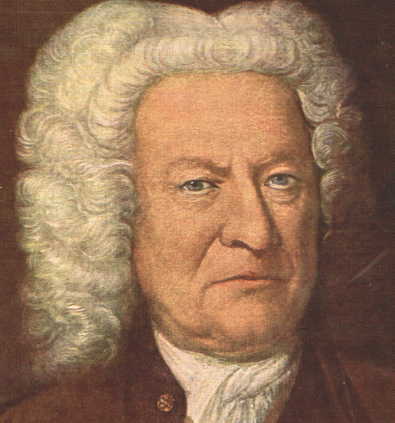In a previous blog of mine in the Composer’s Toolbox series we looked at one musical device that appears quite commonly in Bach’s music, in which a repeated melodic sequence changes to an unexpected and chromatic note at the end – you can read that blog and learn all of its saucy secrets HERE.
Today, we have another commonly-employed musical device of Bach’s to examine. (I know. Lucky you)

A young Bach
This is actually a very easy compositional device to understand. It is simply the use of a key change to a related key. ‘OK, well that isn’t exactly uncommon, and certainly isn’t unique to Bach’ I hear you screaming at your computer monitor. And your rage would be justified. But hang on a second, there’s more. What is so interesting about the ones we are looking at today is where they appear in the piece.
You see, what Bach likes to do (or rather ‘liked’ to do, RIP in peace bröther) is, right at the very end of a piece, which has already traveled on an exciting harmonic journey through several different keys and is clearly building up to a triumphant, jubilant and well-earned return to the home key, one that the listener deserves, nay, needs… suddenly modulates somewhere else. Then right in the very last bar you can have your tonic key resolution. And relax…
One of his most famous pieces, the Prelude in C from the 48 Preludes and Fugues for the Well-Tempered Clavier, does exactly this. Towards the end of the piece, after a brief return to C major, we find ourselves moving off again through F major. There’s some nice harmonic development, passing through some lovely chromatic chords, and we build up to a G dominant seven chord. And I know what you are thinking, a dominant seven chord like this is surely acting as a perfect cadence taking us back to the tonic key. But we do we get instead? C dominant 7, taking us straight back to F again! Then we get to finally resolve. What a tease.
A similar thing happens in the Prelude to his lute suite BWV 998. The arrangement I and most others would be familiar with is for the guitar, in the key of D major (a key which fits nicely on the guitar). So again, there is a great thematic development that goes through many different keys, and a build up back to the home key. This example is different in that the big build up actually goes back to D, but once we are here the D major chord keeps alternating with a D dominant 7, again acting as a perfect cadence and hinting at a related key, in this case G major. This is happening all the way up until the penultimate bar even, before Bach finally relents and lets us relax on the tonic.

An old Bach
So what exactly is the lesson here?
Well, it isn’t that you should change key right at the end of the piece. Not exactly anyway. There’s a bit more to it than that (although changing key right at the very end is a perfectly good compositional tool, and one to stick in your composer toolbox)
The lesson here is that you need to keep the listener on their toes, and not give them exactly what they expect. In this example, what the listener expects is a return to the home key, but Bach subverts their expectations, and the gratification at the climax is higher, even though it is delayed (actually because it is delayed).
This postponement of resolution at the end is just one compositional technique to introduce variety and interest to your piece, but there are countless ways to do this, and how you do it is up to you. The key to great art is invention and creativity. You are unlikely to read in a guide to composition that it is important to change key right at the very end of your piece, and that’s exactly the point! You have to be creative! Throw in something that isn’t formulaic, or by-the-book. Give the listener something new, but (an important but) not something completely random, it should still be appropriate within the context of the piece. I already summed up this point in the last blog I wrote on Bach, so I will simply repeat it here: Music is best when it isn’t completely predictable, nor completely un-predictable. The listener needs to be able to follow your music, but not predict everywhere it is going to go.
Well, I hope you fellow composers out there found this useful, and I will see you next time!
If you enjoyed this lesson, make sure you check out our other blogs, and stay tuned for further lessons. If you’re serious about furthering your knowledge and your career in music, check out our Postgraduate and Premium courses on our website and see which ones are suitable for you. We’re always happy to help, so send us an email at contact@thinkspace.ac.uk with any questions and we’ll get back to you. Click the button below to take a look at our premium courses now.

